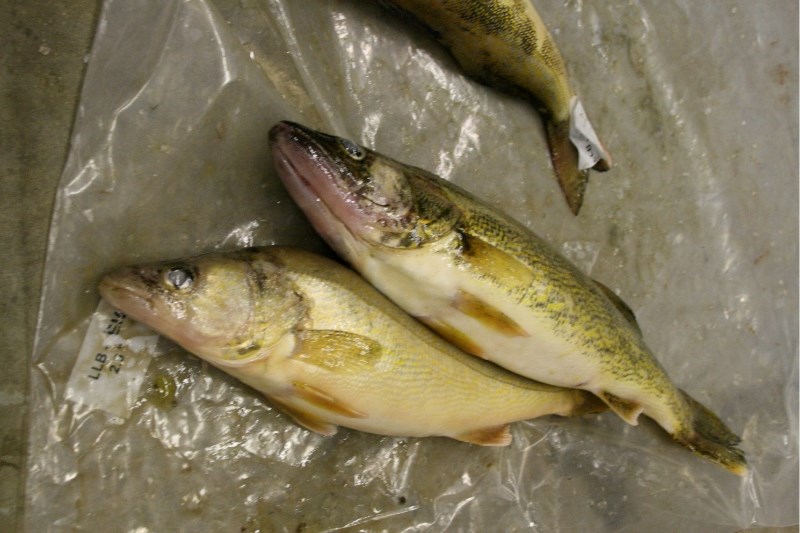With what’ s being called the best spawning run in half a century, officials are confident that the intensive walleye restocking effort in Lac La Biche Lake is a success-so much so that there could be the possibility of walleye sport fishing returnin
With what’ s being called the best spawning run in half a century, officials are confident that the intensive walleye restocking effort in Lac La Biche Lake is a success-so much so that there could be the possibility of walleye sport fishing returning to the lake in the near future.
With steady restocking efforts for last five years, Senior Fisheries Biologist with Alberta Environment and Sustainable Resource Development Chris Davis says Lake La Biche Lake’ s walleye population is on the verge of being self-sustaining after populations collapsed from overfishing in the 1960s. Last week, ideal water temperatures sent the first fry introduced in 2006-now spawning age-up Owl River to lay their eggs.
And the results are encouraging.
“It’ s probably the best walleye spawning run this lake has seen in 50 years,” Davis said.
The biologist said that Lac La Biche Lake is the main, large-scale fish recovery project in Alberta, with around 200 million walleye fry introduced since 2006-about 95 per cent of the province’ s stocking resources. But attempts to resuscitate Lac La Biche’ s walleye population have been going on for decades.
Davis said the lake had been used for sustenance and commercial fishing since the 1860s. Then, increased commercial fishing and indiscriminate netting of fish by area mink farmers looking to feed their animals led to the walleye population’ s total collapse in the 1960s. And as early as the end of that decade, biologists were trying to get the walleye back into Lac La Biche-first by introducing eggs and fry in the late 1960s.
Similar restocking efforts followed. From 1985 to 1994, the lake was stocked with summer fingerlings. Then fry were introduced from 1995 to 1999. And cormorants, lake-birds who eat a minimum of one pound of fish per day, were reduced in numbers by culling adults and oiling their eggs. Finally, in 2006, biologists introduced 120,000 summer fingerlings, 400,000 fall fingerlings, as well as the hundreds of millions of fry harvested from Primrose and Bistcho Lake in eastern and northwestern Alberta.
“Fry are just tiny little things,” Davis explained. “And they’ ve got way less than a one per cent survival rate.”
Alberta Conservation Association biologist Ariane Cantin and her colleagues were at Owl River last week, gathering data on the walleye population to see if the latest restocking efforts have been successful. The river on the east shores of Lac La Biche Lake is the most important spawning tributary for local walleye, and Cantin’ s job was to see if the fish have a fighting chance of being self-sustaining.
“Owl River is super important to the walleye population in Lac La Biche Lake,” Cantin said. “You can put all the walleye you want in the lake, but they need a place to spawn to survive.”
The biologist said that walleye need special conditions to reproduce. The fish like a water temperature of seven to 10 degrees-which is usually when the ice has just melted-as well as a rocky riverbed to lay their eggs.
But even with the walleye’ s temperamental reproductive demands, Cantin said she’ s encouraged by their latest round of monitoring. Her team set up traps to catch fish as they’ re headed upriver to spawn, and as of last week, they’ d caught 4,000 pike and 200 walleye-the latter fish described as a “good healthy size.”
Davis said a report on the latest walleye monitoring effort will be finished this fall. But the biologist noted there won’ t be anything other than catch-and-release of walleye this year on Lac La Biche Lake. However, thanks to the encouraging recent spawning run, Davis said fishery officials could begin doing public consultations in the near future to discuss the possibility of catching walleye for real.
“There’ s been a substantial recovery in walleye population,” Davis said. “Right now, we’ re looking at when it’ s appropriate to allow a harvest-and we’ re getting close. I’ m hopeful 2011 will be the last year we’ ll have to stock walleye, and that the fish will take off where we left off and become self-sustaining again.”
